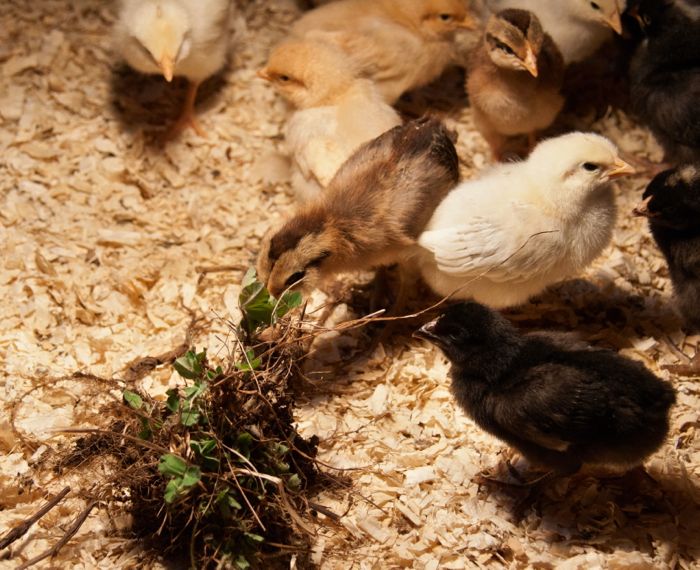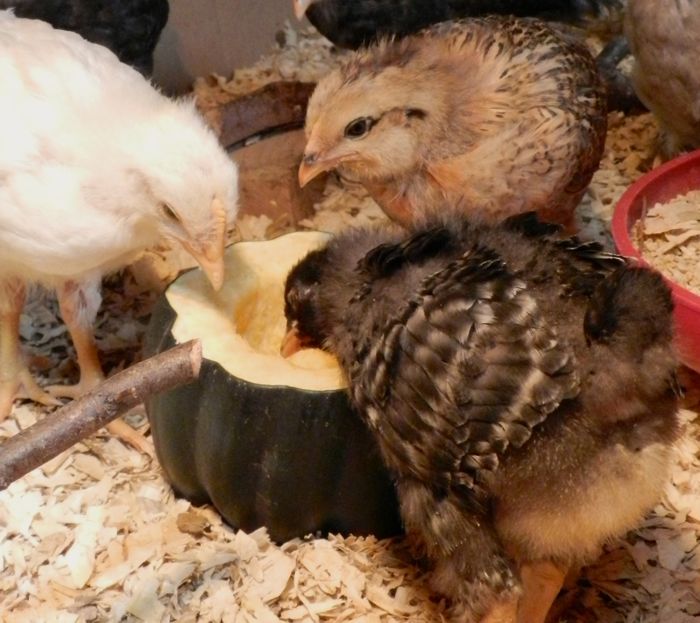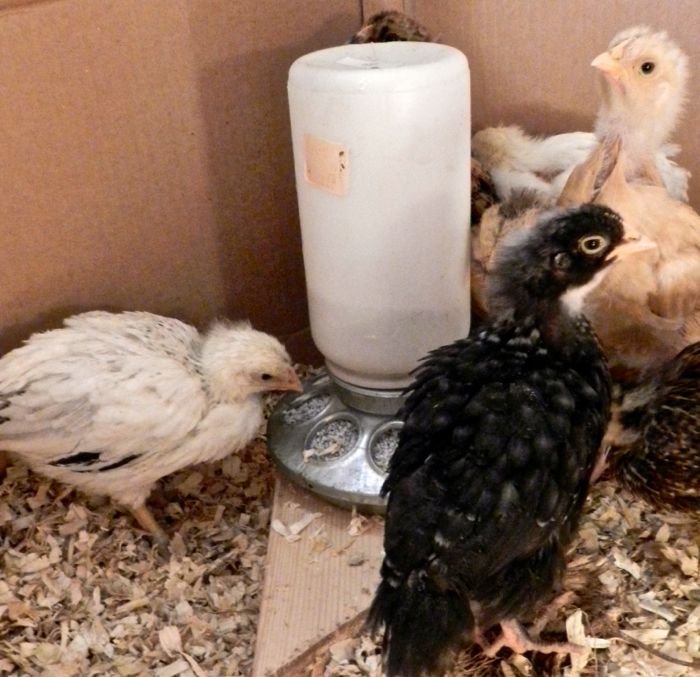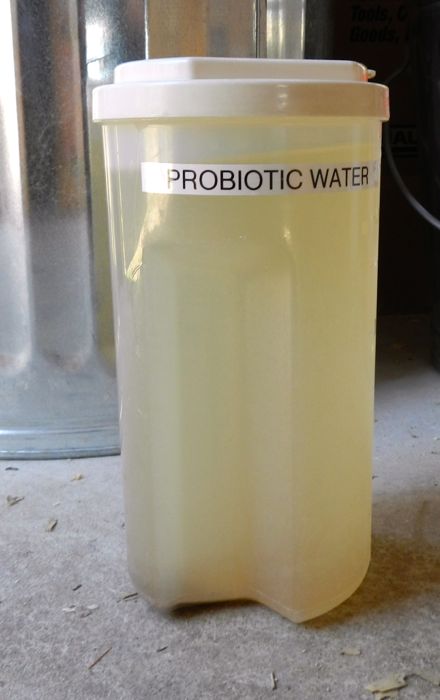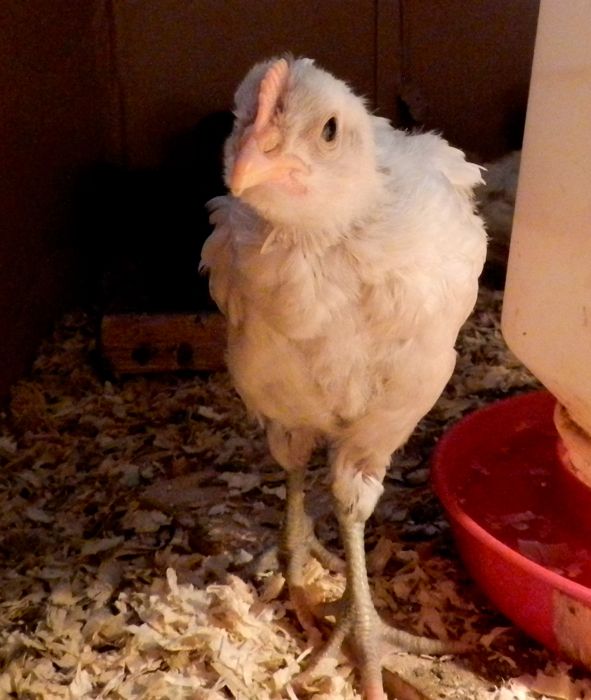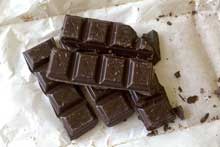Free shipping and a hand-written card!
Treats For Chicks
Within a day of a chick hatching she is ready to search for food, to explore, and to interact with others. Unfortunately, a typical brooder is a boring place. There’s nothing to peck at except for uninteresting crumbles and the other chicks. In a perfect world, the chicks would be able to go outside and scratch up bugs in the dirt, eat greens in the yard, and try little bits of this and that. But, that’s not usually possible. Chicks need to be kept in a safe and warm enclosure. We’ve had a very cold spring. Yesterday it was drizzly and didn’t warm up past 40 degrees F. There’s no way that my chicks could go outside. Also, the first week or two, it’s best to keep them on clean ground where they won’t be exposed to coccidia and respiratory diseases. That’s why they stay in the brooder.
Chicks will grow okay if fed only crumbles. But, from the get go they’re omnivores, and a varied diet will do them good. That doesn’t mean that you should give them piles of treats. Although chicks are designed to eat continuously (except for when they’re napping) they are gluttons. Give them an easy to chow down on food and they’ll overeat; depending on what you feed, it could be like letting a toddler eat only Lucky Charms cereal.
You might have read that you can chop up vegetables and bread into fine bits and feed this as treats to your chicks. I disagree. Chicks don’t need their treats minced. By day four a chick can swallow a whole worm with no problem (and digest it easily thanks to grit.) Besides, I want my chicks to be kept busy by their treats, which should take time and effort to consume. Also, the treats must be nutritious. Chicks require a higher protein content than adult hens. Bread and corn won’t provide that. On the other hand, don’t feed dried mealworms, as a few too many can lead to kidney disease.
The first week I give the chicks a small clod of dirt with a clump of clover attached. This is better than grass, which has long blades that can get impacted in the crop. The chicks peck and eat bits of green and they even find bugs to eat. You might see a chase and tug of war when a worm has been found. They’ll scratch at the dirt. Scratching is another innate behavior that chicks are preprogrammed to do. Giving them an outlet for this is important to their well-being. You’ll hear much excited and happy chirping.
Dandelions are also good treats for the youngest chicks. At first they’ll eye this new thing, but in no time at all they’ll be all over it.
If nothing is growing, or just for a change, give them a vegetable to work at. They’ll peck at it and not at each other. Win-win!
As the chicks get older, you can continue to offer clover.
You can also give them a clod with short blades of grass attached.
An added benefit is that once the greens and the bugs are eaten up, there will be dirt for them to take a dirt bath in. Your chicks will know how to do that their first week, too!
In no time at all they’ll grow up. But, they’ll never stop eating their greens.
Grit and Probiotics for Chicks
Along with providing food and water, there are two other things to offer your chicks that will greatly improve their vitality: grit and probiotics.
Chickens, like all birds, do not have teeth. They don’t chew. Rather, they swallow food whole. Their digestive tracts are designed to deal with this. Specifically, a chicken has a gizzard, which is an exceptionally strong muscular pouch that grinds up food. The gizzard does this with the help of small rocks that the chicken swallows. Even if your hens free-range, it’s unlikely that they can find just the right pebbles for their gizzard. Certainly chicks, in a cleanly bedded brooder, don’t have access to what their gizzards need to function properly. That’s why they need you to provide grit.
You can buy a bag of grit at the feed store or online. Basically, it’s ground up granite. Chick grit is finer than chicken grit. It might seem crazy to spend $10 on a bag of pebbles, but it is essential to the health of your new flock. This is not a new idea. I have a catalog from 1919 that offers bags of chick grit for sale.
The first day that the chicks arrive, make sure that they are eating their feed ration. Then, introduce the grit (if the grit is given first, they might overload on it.) I prefer a dispenser because it is less wasteful than spreading the grit on the ground, and I can see clearly when it requires replenishing. The chicks know what they need and will eat the right amount. In the first two weeks my 26 chicks consumed all of the grit in this container!
The other supplement that I provide my chicks are probiotics. Everyone’s intestinal tract has both good and bad bacteria in residence. When the balance is off animals don’t thrive and can sicken. You can provide your chicks with the right microorganisms by adding a product like Gro2Max to the drinking water. I did this consistently for the first two weeks. It doesn’t hurt to give it all the time, but I don’t, simply out of convenience. The chicks go through a lot of water and often make a mess. There are times when I do a quick clean up and refill from the outside faucet instead of bothering with water prepared with probiotics (which has to be mixed in advance and replenished daily.)
It’s better to have clean water than leave the fount dirty. A couple of times a week I fill the waterer with the Gro-2-Max laced water, which is enough to get the benefits of the product.
My chicks are strong, healthy, and active, due in no small part to providing them with grit and probiotics.
Blue Andalusian (Rooster?)
This 25 day old chick has something about her him.
The comb is larger than the other chicks’ combs.
These days, when I put my camera into the brooder, I get a lot of these photographs:
This Blue Andalusian is bold, curious and more interested in the shiny lens than in food. I might be wrong. It might be a she. But if it is a he, anyone want a strapping, healthy, handsome young fellow for your flock?
What To Feed Chicks
When chicks hatch, they still have some yolk remaining inside of them. This can provide them with nutrients and water for the first few days of life, which is why chicks can be shipped in boxes through the mail. As soon as they arrive home they need to be fed and watered. (To see how this is done, see this post.)
The bulk of a chick’s diet should come from commercial feed formulated specifically for them. Chick feed differs from laying hen ration in several important ways. First of all, it is in the form of crumbles, which, being smaller, is easier for chicks to peck and swallow. (Some people feed crumbles to adult hens, but I think it wasteful, as much gets tossed onto the ground where it becomes inedible dust.) Secondly, chick feed is higher in protein, around 18% versus 14 to 16% in laying hen pellets. Lastly, and of the greatest importance, chick feed is low in calcium. Mature birds eat laying hen pellets formulated with calcium because that mineral is necessary to create eggs. What’s good for layers is not good for chicks. Chicks fed a ration with calcium will develop kidney disease. Although chicks can’t eat layer pellets, older birds can eat chick feed. So, if you have chicks in with a flock of adult birds, they should all eat chick crumbles. Calcium can be provided to the mature hens’ diet by offering crushed oyster shell in a dispenser out of reach of the little ones. The higher protein content of the chick feed won’t harm the older hens over the short time that it takes for the chicks to mature.
Chick feed comes plain or medicated. Although chicks in large production facilities are fed sub-therapeautic antibiotics, the bags of feed sold to backyard keepers don’t have those drugs in them. Rather, the “medication” refers to a coccidiostat that kills a lethal protozoa. Not all backyards harbor coccidia, but if yours does, the chicks might get bloody diarrhea and die. Some people wait until there is a sign of the ailment before treating the flock with a coccidiostat. Other chicken keepers routinely offer a medicated ration as a preventative measure. Some, like myself, get chicks vaccinated for coccidia. If your chicks are vaccinated for coccidia, then you cannot use medicated feed. (This is for the coccidia vaccine. If your chicks are vaccinated only for Marek’s disease, you can feed a coccidiostat.)
Feed your young birds a starter ration until they reach point of lay, about sixteen to eighteen weeks of age. At that point they will do better on a lower protein ration, and their systems can handle the calcium. Do not feed chicks that are destined to be laying hens a “finish ration” or a “show and grow.” These products are designed for meat birds, and put weight on fast. Not only is the protein and fat content wrong for layers, but a few companies do put antibiotics into them.
Buying a 50 pound bag of chick feed might seem like too much. However, each chick will eat up to 4 pounds of crumbles in the first ten weeks. As they get older, they eat more, so by the time they are at point of lay they’ve eaten around 10 pounds of crumbles. If your chickens free-range, they’ll eat a bit less of the commercial ration. But, if I go by these numbers, conservatively my 26 chicks will eat 260 pounds of chick feed on their way to becoming laying hens. (By the way, a 50 pound bag of feed costs about $18, or 36¢ per pound.)
Chick feed and clean water are not the only things that chicks should be consuming. In tomorrow’s post I’ll tell you about grit and probiotics. Also, like mature hens, chicks do best with a varied diet beyond the commercial ration. I’ll be talking about treats, greens and bugs soon, too.
